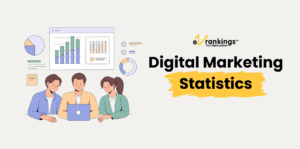Google Web Stories: All That You Should Know

Google Web Story is a web based story version introduced by Google. Just like other stories, they are a dynamic feature that blends images, animation, videos, audio, and even text. It’s convenient to swipe one story to the next or even tap on it to access it.
Individuals love interactive, dynamic content as they find it more engaging than simple text. This is also the reason why every major social platform has this feature. In that regard, Google Web Stories are the same but it has certain differences as well.
If you want expert services in creating and distributing Google Web Stories, then you can also take assistance from our SEO Company India. Else, you can get along and read this complete guide.
This blog covers Google Web Stories extensively. So, if you’re trying to learn more about Google Web Stories, this read will serve as a perfect guide for you.
Google Web Stories: The Basics Explained
Google Web Stories are the web version of the story format that businesses can host, own and create on their websites. They are engaging, full screen experiences that businesses can use to reach their target audience. Unlike other popular story formats, Google Web Stories don’t automatically expire after 24 hours. They can stay for as long as possible.
Moreover, these stories can include Google Adwords, links, and other CTA’s to make them more click worthy and interactive. Apart from the website, these stories can also be accessed through Google Search, Google Images, or Google Discover app that’s available on Android and Apple devices.
Therefore, stories can be used by brands to showcase storytelling and connect with the audience in a more personalized way.
How To Create A Web Story?
Just like other, standard, regular pages on Google, Google Web Stories should abide by the same guidelines. There are majorly two ways to create engaging Google Web Stories:
- If you don’t like the hassle of coding, you can use several story editor tools to create engaging stories.
- AMP or Accelerated Mobile Pages can be used if engineering resources are available. Kindly, also use Chrome Developer tools to imitate various sizes and formats.
Read this official Google guide to create the best Google web story possible.
Moreover, stories should be about brand imaging. Think of your business brand and then deliver. Plan out your story and see which visuals you require. Creating an engaging web story can prove to be fruitful in the long run.
Steps To Ensure AMP Validation
Once the story gets developed, it’s essential to assure that the story is AMP valid. An approved AMP requires adherence to different AMP specifications. Following these AMP specifications, ensures the best performance and experience for the users. You can make use of the tools mentioned below to ensure AMP verification:
- AMP Linter: Checks web stories during the development phase through the command line.
- URL Inspection Tool: Assures web story is genuine AMP and the Google indexing situation of the URL.
- Web Stories Google Test Tool: Checks whether the story is valid or not.
How To Verify The Metadata?
Necessary metadata must be provided for the web stories to appear in Google Search or Google Discover. These are the steps that must be followed:
- Check the full list of metadata.
- Now, check that the web story appears correctly with the help of the Web Stories Google Test Tool.
Moreover, these are the required fields for each web story: publisher-logo-src, title, publisher, and poster-portrait-src.
How To Check If The Story Is Indexed?
Finally, you should verify whether the web story is indexed or not. Simply, use the URL Inspection Tool to submit single URLs or review status with the help of a Sitemaps report or Index Coverage report. If the web story isn’t indexed you can probably:
- Link web stories from your site or add a web story URL to your sitemap for better indexing of the web stories.
- Web Stories must always be canonical. Each web story should have a link rel=”canonical”. Moreover, if there are multiple versions of the same story in various languages, ensure to inform Google about the localized versions.
- Also, check if Googlebot isn’t blocking the Web Story URL via the robots.txt or noindex tag.
Tools For Creating Engaging Web Stories
Not everyone can code or is tech savvy. For individuals that want to create web stories without coding, Google does offer some tools to make the job easier. Here are some of the tools that you can use for creating appealing web stories:
1. Google Plug-In Web Stories
Since WordPress websites make up a large section of the websites on the web, it’s fair to start this list with this tool. The tool allows you to create Google Web Stories from within the WordPress CMS. It’s fair and simple to create Google Web Stories with this drag and drop plugin. Right away, a story can get published on a website.
2. Make Stories
Again, Make Stories allows for easy-to-use, powerful features. Also, they have a large collection of free images, symbols, icons, and more. Again, the drag and drop feature of this tool is easy for even beginners to use. There are easy templates to help you get started.
There’s a WordPress integration, but there’s an option to export every story into a zip file. It’s even possible to publish to the FTP or File Transfer Protocol on your website. Hence, it’s a beginner tool that can aid you in getting started with Google Web Stories.
3. Newsroom AI
This tool is free with a ton of available features. Even with the unpaid version, you can conveniently embed stories on the website. Later, you can get your stories out on Google. Moreover, you can track how well your stories are performing thanks to an analytics reporting feature.
To get started with Newsroom AI, follow these simple steps:
- Start with creating your account on Google and click on Create Story.
- With a ton of templates to choose from, you can choose a suitable one and get started with creating the page.
- Next, you can modify the content of the page as per your wish. This includes text, photos, and videos. Also, it’s possible to change the template or layouts midway through the process.
- Lastly, you can even upgrade to a paid account for more options.
It’s also possible to create some money with the content by making use of Google Ads that come with the paid version. With the paid version, the user also gets access to the Getty Images collection of images for more creative control.
What Are The Benefits Of Using Google Web Stories?
If you’re considering the idea of creating stories for your brand, here are some of the benefits that you can get from building Google Web Stories:
1. An Engaging Experience For The Website Visitor
Google Web Stories can increase engagement, and enhance the full screen user experience for any website visitor. Be it storytelling, or adding a flair to your website blogging, Google web stories can certainly bring an immersive experience to your website.
Google Web Stories are available for both mobile and desktop viewers on the full screen. With a limited description, a user can feel like being a part of your story or brand.
2. A New Method To Attract Your Target Audience
Google Web Stories are not only attractive but they are a powerful feature that allows your story to become visible on multiple platforms. These stories are visible on Google Search Pages, and Google images, hence, it’s worth creating and sharing them. Moreover, this can enhance your SEO efforts as it’s quality content creation and sharing that can bring the right customers to your website. Lastly, the addition of CTA’s and links make them even more acceptable for driving traffic to your website.
3. Complete Content Ownership
With Google Web Stories, it’s possible to mold the content and the creative choices are endless. Moreover, the ownership is solely credited to the creator. Using third party platforms or AMP, a user can gain complete creative control or ownership of these stories.
This is the major difference between social media stories and Google Web Stories. It’s up to the person to do what they like with the story.
You can share your Google Web Stories, the way you please. Always think of your brand and create the perfect story to attract the right customers. Thus, the creative choices are endless and the creator can do with their stories, the way they please.
4. Viewers Find It Fun
An internet user is continuously fed with content. To keep it engaging for viewers, share beautiful, dynamic stories they would want to watch again.
Sharing informative content can also prove to be useful for businesses. They can engage with their audience meaningfully and create positive relationships with them. By doing as such, a business can become a thought leader in its niche.
Keeping these things in mind can make it interesting for your target audience to view your story and interact with it.
5. An Opportunity For Unique Ad Creation
Lastly, it’s a great option to integrate ads with stories to make your ads engaging. This way brands can look for more innovative and creative ways to create an ad. With a great SEO enhancement possibility with such stories, an ad can be tied for better reach and engagement.
Therefore, with more CTA’s and links to landing pages and blogs, it’s a creative way to get your ad in front of the target audience who are more likely to interact with it due to its dynamic nature.
Some Examples Of Brilliant Google Web Stories
1. Ford Mustang’s Tablet Friendly Story
The story does exceedingly well on both desktop and mobile platforms with the messaging and theme. It gets as close as it can get to a speedy, responsive story, suiting the theme of a premium car brand. Ford does a fine job with this story increasing the engagement with its customers.
Click here to view the story
2. Effective First Person Cooking Story
A simple tutorial on Japanese Curry can also become effective, interesting, and appealing with the right use of the story feature. A usual blog post on a cooking recipe might not prove to be that practical. A video can make it inconvenient to play and pause at the right moment.
However, with a story that’s relatable, and delivered in the first person from a chef, the story becomes easy to follow and interactive.
Access the story here.
Conclusion
With Google Web Stories, brands can create dynamic content and interact with their audience engagingly. If the right guidelines are abided by, Google Web Stories can be created in multiple ways. With the rightful ownership, it’s up to the business the way they wish to distribute their stories. Hence, businesses can find high value and enhance their SEO with such meaningful and interactive content that users find it engaging to interact with.






